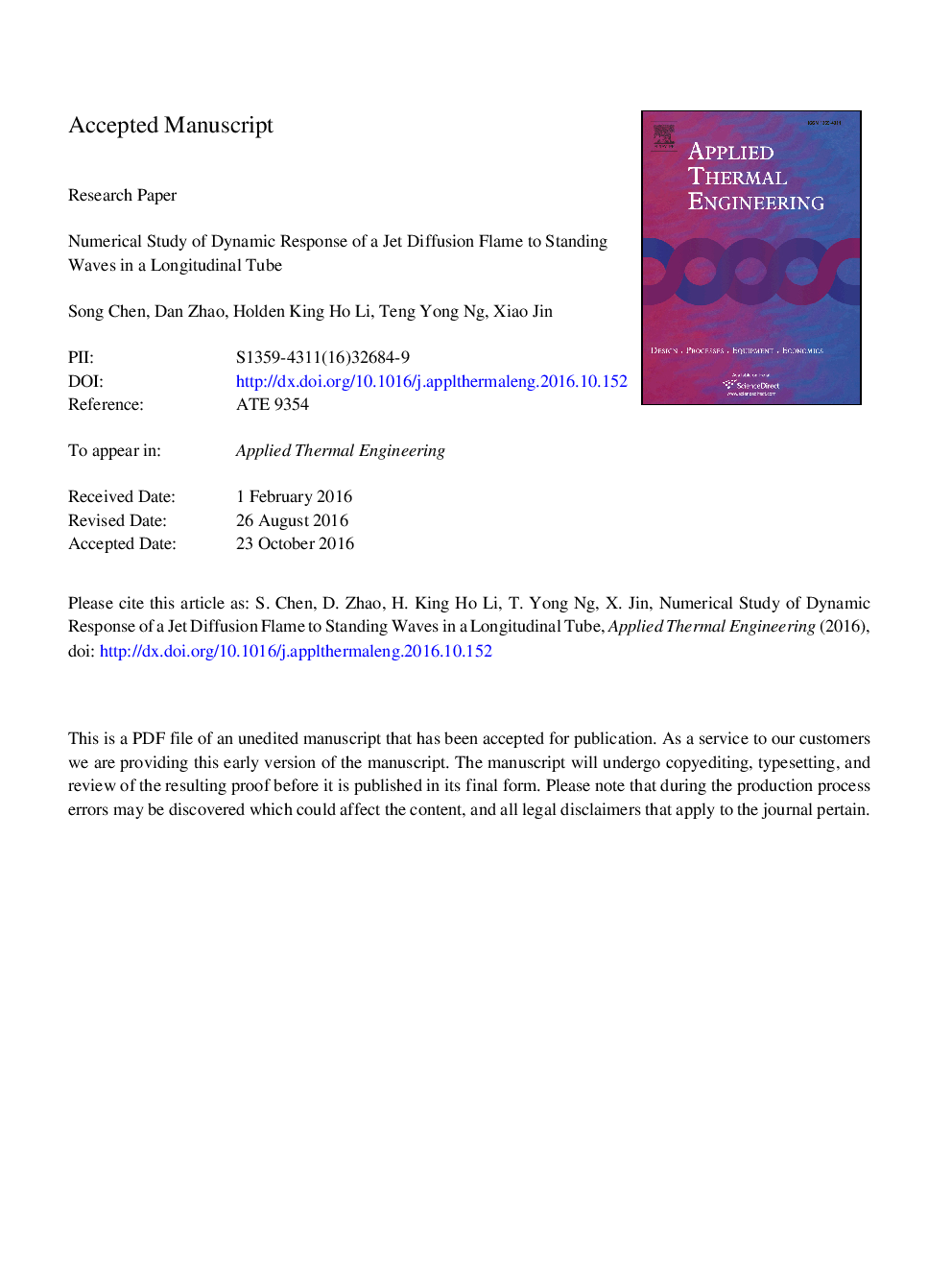| Article ID | Journal | Published Year | Pages | File Type |
|---|---|---|---|---|
| 4991775 | Applied Thermal Engineering | 2017 | 33 Pages |
Abstract
In this work, the dynamic response of a propane-burnt (C3H8) jet diffusion flame in a longitudinal tube to acoustic waves produced from a loudspeaker are studied. For this, 2-D numerical simulations are conducted by using FLUENT to investigate the interaction of acoustics-flow-flame. Unsteady RANS simulations with one-step Eddy-Dissipation (ED) combustion model are used in the model. And acoustic fluctuations are generated by using User Defined Functions (UDF). The numerical model is validated first by comparing the numerical results with the experimental measurements in the absence of a flame. Further validation is performed by comparing with flame-involved experimental results available in the literature. It is shown that the jet and the flame characteristics are highly sensitive to its axial location, especially when standing waves are present in the tube. The jet experiences large velocity fluctuations. Flow reversal is observed, when the jet is placed at acoustic velocity antinodes. However, the jet and flame are much stable in the velocity node region. Due to the large-amplitude acoustic disturbances, an interesting unsteady mushroom-shaped flame is observed. The numerical model is then used to determine the flame transfer function (FTF), which is important to characterize the flame-acoustic coupling behaviors. It is shown that the flame transfer function is nonlinear. Furthermore, it depends strongly on not only the amplitude of the acoustic disturbances but also the frequency. Such strong responses of the flame to acoustic waves are due to the 'resonance' effect of the tube. The present work opens up new applicable way to model and characterize the flame-acoustics-flow interaction via flame transfer function.
Related Topics
Physical Sciences and Engineering
Chemical Engineering
Fluid Flow and Transfer Processes
Authors
Song Chen, Dan Zhao, Holden King Ho Li, Teng Yong Ng, Xiao Jin,
